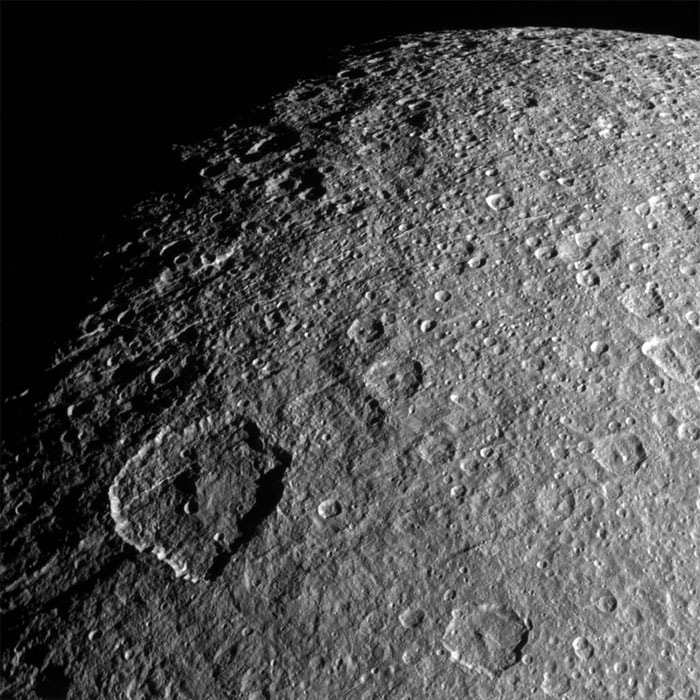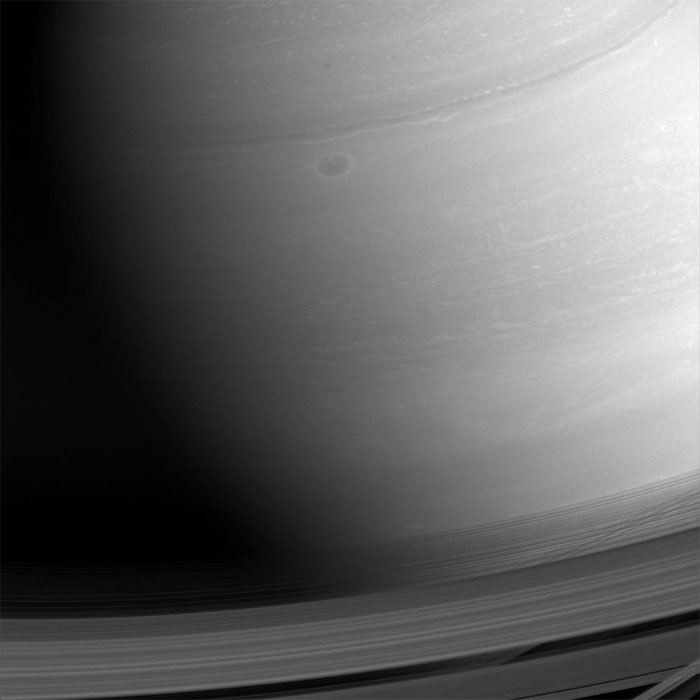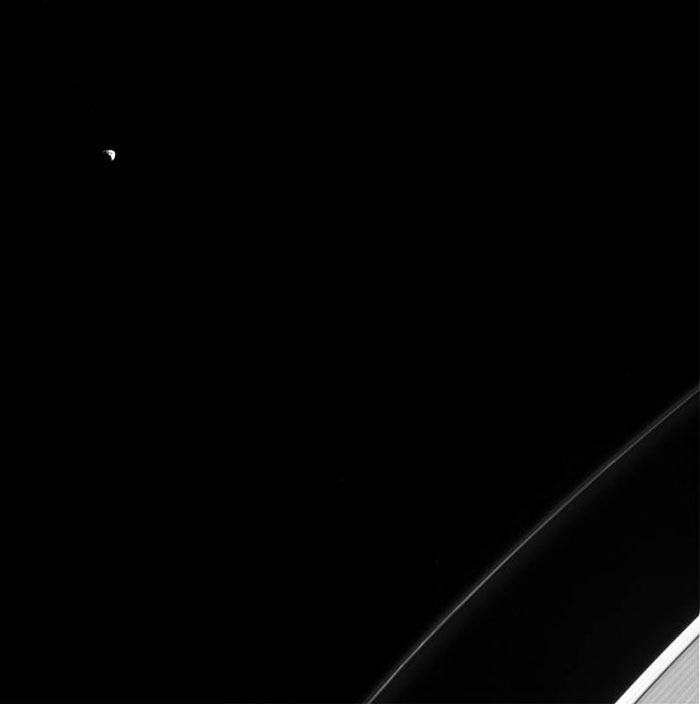.

Surface features on Rhea - mostly impact craters in this image - are thrown into sharp relief thanks to long shadows. Viewing this terrain near the day/night terminator makes it easier to appreciate just how violent Rhea's geological history has been.
The craters on Rhea (949 miles, or 1,527 kilometers across) are the result of 4.6 billion years of bombardment by small bodies. With very little erosion, the scars and craters remain unless they are overwritten by other, newer impacts.
This view looks toward the anti-Saturn hemisphere of Rhea. North on Rhea is up and rotated 11 degrees to the right. The image was taken in visible light with the Cassini spacecraft narrow-angle camera on Feb. 10, 2015.
The view was acquired at a distance of approximately 47,000 miles (76,000 kilometers) from Rhea. Image scale is 1,500 feet (460 meters) per pixel.
The Cassini mission is a cooperative project of NASA, ESA (the European Space Agency) and the Italian Space Agency. The Jet Propulsion Laboratory, a division of the California Institute of Technology in Pasadena, manages the mission for NASA's Science Mission Directorate, Washington. The Cassini orbiter and its two onboard cameras were designed, developed and assembled at JPL. The imaging operations center is based at the Space Science Institute in Boulder, Colorado.
.

Saturn's surface is painted with swirls and shadows. Each swirl here is a weather system, reminding us of how dynamic Saturn's atmosphere is.
Images taken in the near-infrared (like this one) permit us to peer through Saturn's methane haze layer to the clouds below. Scientists track the clouds and weather systems in the hopes of better understanding Saturn's complex atmosphere - and thus Earth's as well.
This view looks toward the sunlit side of the rings from about 17 degrees above the ringplane. The image was taken with the Cassini spacecraft wide-angle camera on Feb. 8, 2015 using a spectral filter which preferentially admits wavelengths of near-infrared light centered at 752 nanometers.
The view was obtained at a distance of approximately 794,000 miles (1.3 million kilometers) from Saturn. Image scale is 47 miles (76 kilometers) per pixel.
.

Although Janus should be the least lonely of all moons - sharing its orbit with Epimetheus - it still spends most of its orbit far from other moons, alone in the vastness of space.
Janus (111 miles or 179 kilometers across) and Epimetheus have the same average distance from Saturn, but they take turns being a little closer or a little farther from Saturn, swapping positions approximately every 4 years. See PIA08348 for more.
This view looks toward the sunlit side of the rings from about 19 degrees above the ringplane. The image was taken in visible light with the Cassini spacecraft narrow-angle camera on Feb. 4, 2015.
The view was acquired at a distance of approximately 1.6 million miles (2.5 million kilometers) from Janus and at a Sun-Janus-spacecraft, or phase, angle of 91 degrees. Image scale is 9 miles (15 kilometers) per pixel.
The Cassini mission is a cooperative project of NASA, ESA (the European Space Agency) and the Italian Space Agency. The Jet Propulsion Laboratory, a division of the California Institute of Technology in Pasadena, manages the mission for NASA's Science Mission Directorate, Washington. The Cassini orbiter and its two onboard cameras were designed, developed and assembled at JPL. The imaging operations center is based at the Space Science Institute in Boulder, Colorado.
Quelle: NASA
4905 Views
